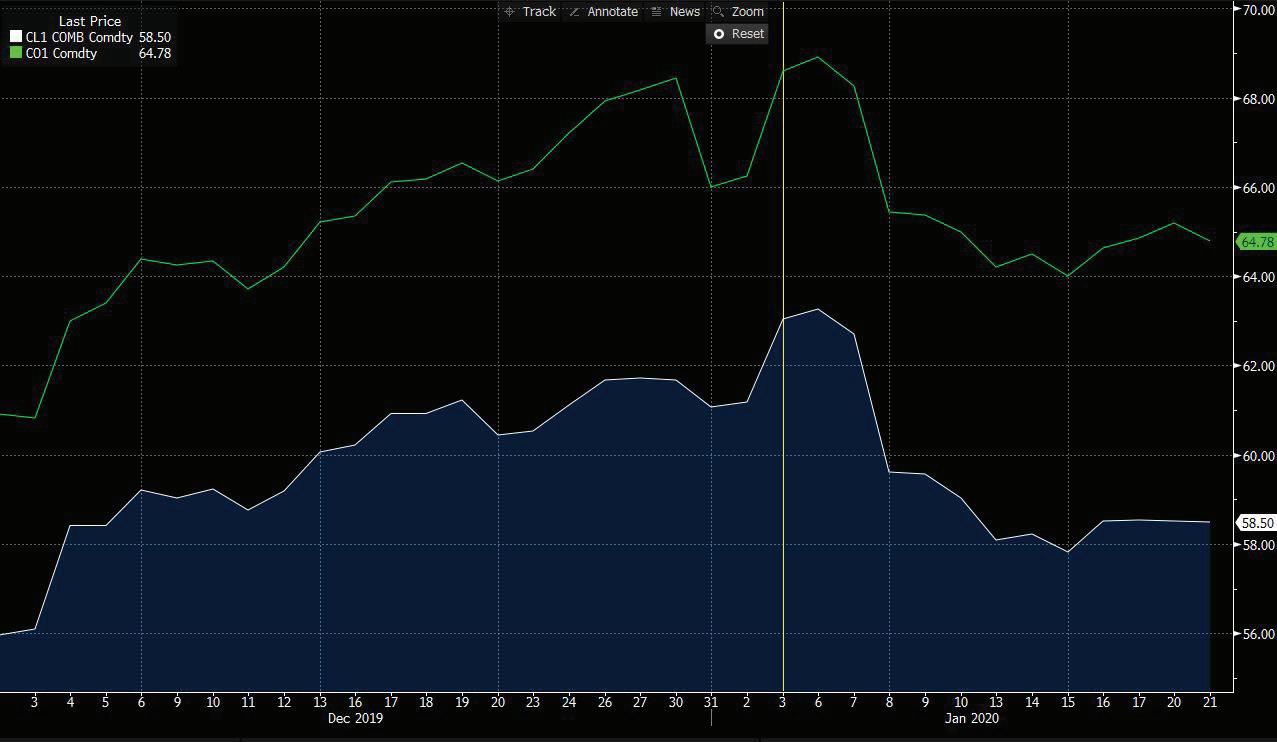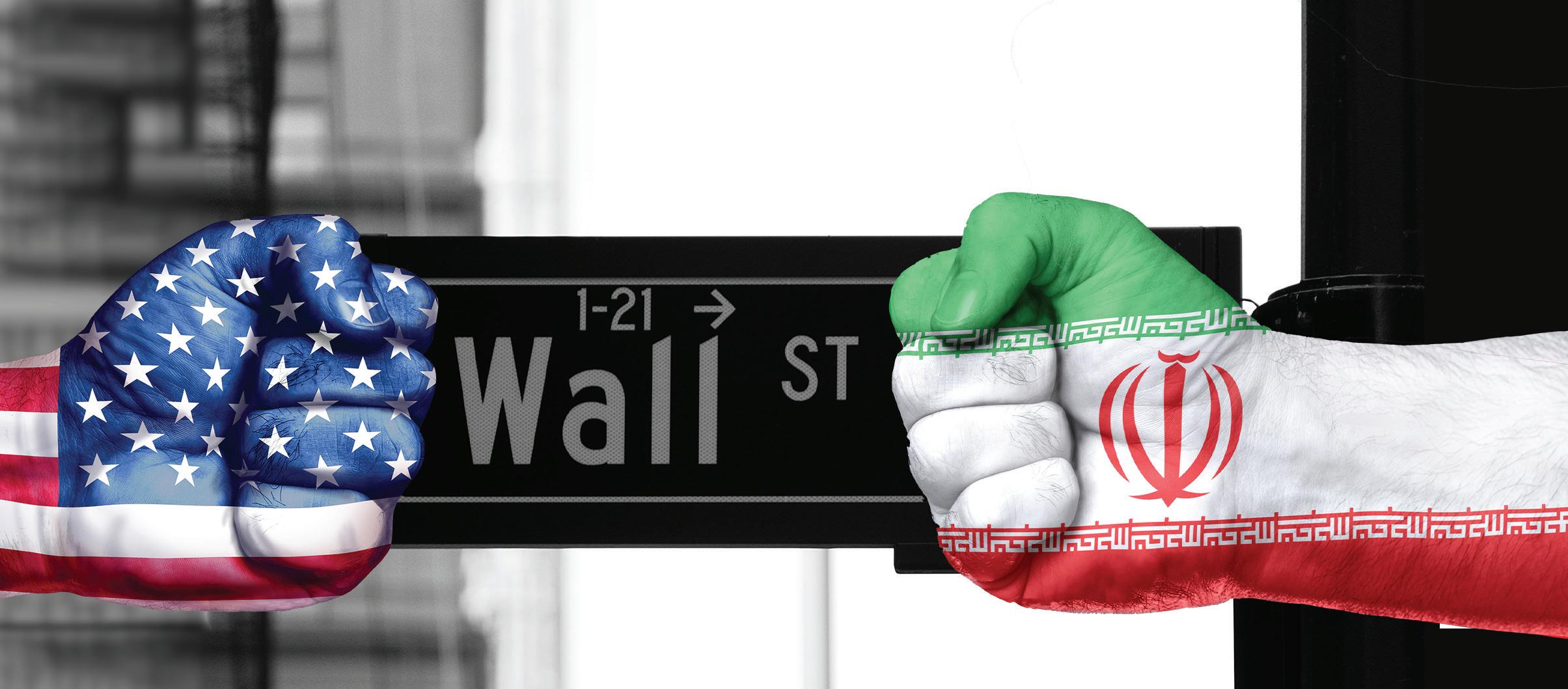
5 minute read
THE UNIQUE PROBLEM OF IRAN
Conflict in the Middle East increases when the U.S. killed major general Qasem Soleimani early this year. Christopher Hill explains what this means for the oil and gas industry. CHRISTOPHER HILL, FORMER U.S. AMBASSADOR TO IRAQ
Rising tension between the United produced 2.1 MMBOEPD, according to secondary States and Iran caused concern sources reported in OPEC’s monthly report. for oil supply and transportation when the U.S. killed Iranian major Along with concerns that kinetic conflict might stop general Qasem Soleimani on production at the wellhead, Iran has frequently January 3, 2020 in a drone strike threatened to prevent transportation of crude through in Iraq. In retaliation, Iran launched numerous ballistic
missiles at targets inside Iraq including the Ain al-Assad
airbase which houses U.S. troops. Protests continue in Baghdad this week and more rocket strikes have been reported in the city’s Green Zone, the heavily fortified area of the capital that houses the U.S. Embassy. The initial escalation of force sent oil prices to multimonth highs of $68.91 and $63.27 for Brent and WTI crude grades, respectively, on January 6, 2020. A hot conflict in the Middle East could quickly disrupt oil production in some of the largest producing countries in the world. Iraq accounted for 4.6 MMBOPD of crude production in the fourth quarter of 2019 while Iran the Strait of Hormuz, a narrow strait approximately a fifth of the world’s oil shipments pass through. With a significant portion of global production and such an essential logistics chokepoint all being threatened by the possibility of a military conflict, Iran continues to be a major focal point for global oil markets and for U.S.

Brent and WTI crude oil prices. Yellow line marks Jan. 3, 2020, the date Qasem Soleimani was killed by a U.S. drone strike in Iraq
policy. “I think there’s an interest in the Trump administration to calm this down,” explained Ambassador Christopher Hill, former U.S. Ambassador to Iraq, and Chief Global Advisor and Professor of the Practice in Diplomacy at the University of Denver. “Iran has shown some restraint in that they have not killed any U.S. soldiers,” continued Hill, referencing that troops at al-Assad were warned in advance of the missile strike, “the president – any president – would have to go with Iran if we saw a successful attack against U.S. troops.”
Conflict in the Middle East is complicated and runs deep. The assassination of Soleimani was a strain on the delicate balance in the region. “It’s important to understand that this was not some stateless guy living in a cave. Soleimani was a general in the Iranian military and had quite a large following in Iran,” said Hill.
“In the view of many in the American military, Soleimani was responsible for the death of thousands of U.S. soldiers through his actions backing Shia militias in Iraq,” continued Hill. “I was in Iraq in June 2009 and an Iranian-funded Shia militia tried to kill me. Fortunately,

the bomb went off in front of my vehicle, not under it. Despite Iraq electing a Shia government, and the strength of the Shia So, there is a feeling that something needed to be done, militias in the country, the Iraqi electorate is becoming increasingly but back in Iran, he's somewhat a hero. After all, he was fatigued with foreign powers in the country said Hill. “There has been a key player in organizing Shia groups to fight against a great deal of negative feelings toward Iran in Iraq, even though it is a ISIS." majority Shia state,” he said. “They have seen Iran excessively interfere Adding to the geopolitical dimensions of Soleimani’s sentiment that maybe the Americans should leave with the Iranians.” position as a high-profile general in Iran are sectarian issues at play throughout the Middle East. Once Stability and participation could offer a path forward. Saddam Hussein’s Sunni government was Uncertainty creates volatility in any market, removed from power in Iraq, a Shia-led government was elected, The old Chinese proverb ‘the enemy of my enemy is my and with tensions ratcheting up in the Middle East oil prices could see fluctuations. Following the drone strike that killed Soleimani making it something of a friend’ is more like ‘the enemy and Iran’s response, oil prices have settled political pariah among its of my enemy is still my enemy’ back below $65 and $60 dollars per barrel Sunni-led neighbors. in the Middle East. for Brent and WTI respectively. Both the U.S. and Iran appear to be acting careful before “Other countries in the further escalating into what could become a region are concerned that hot conflict. their own Shia populations will become emboldened if the Shia government in Iraq is successful, so they “Hope is not a good basis for policy, but we should hope that the have never fully supported Iraq,” said Hill. For several Iraqis will name a new government, that Iraq’s Sunni neighbors will reasons including the lack of support from its neighbors, encourage Iraq’s Sunni population to be full participants, and that a new the central government in Iraq has been weak, leaving government will be able to stabilize things and get the economy going. room for Shia militias, many of which Soleimani was Let’s hope too that a new Iraqi government will not be pressing for the responsible for organizing and funding, to take a more withdrawal of U.S. troops. We need some troops there to assist with the prominent role in politics in the country. problem of ISIS,” said Hill.
“Iran is tagged a terrorist state, and appropriately so - they support Shia groups such as Hezbollah - but it’s important to understand that the terrorism of al-Qaeda and ISIS is of the Sunni variety,” explained Hill. “Iran and these Shia groups in many ways led the fight against ISIS. The old Chinese proverb ‘the enemy of my enemy is my friend’ is more like ‘the enemy of my enemy is still my enemy’ in the Middle East.” in their country, but with the killing of Soleimani you are seeing a shift in How the U.S. and Iran will face escalating or deescalating tensions from here remains to be seen, but with so much of global production originating in the region, and major transportation lanes at risk, oil markets will continue to watch events in the Middle East with interest.
For the latest, in-depth coverage of all things Oil & Gas, visit




